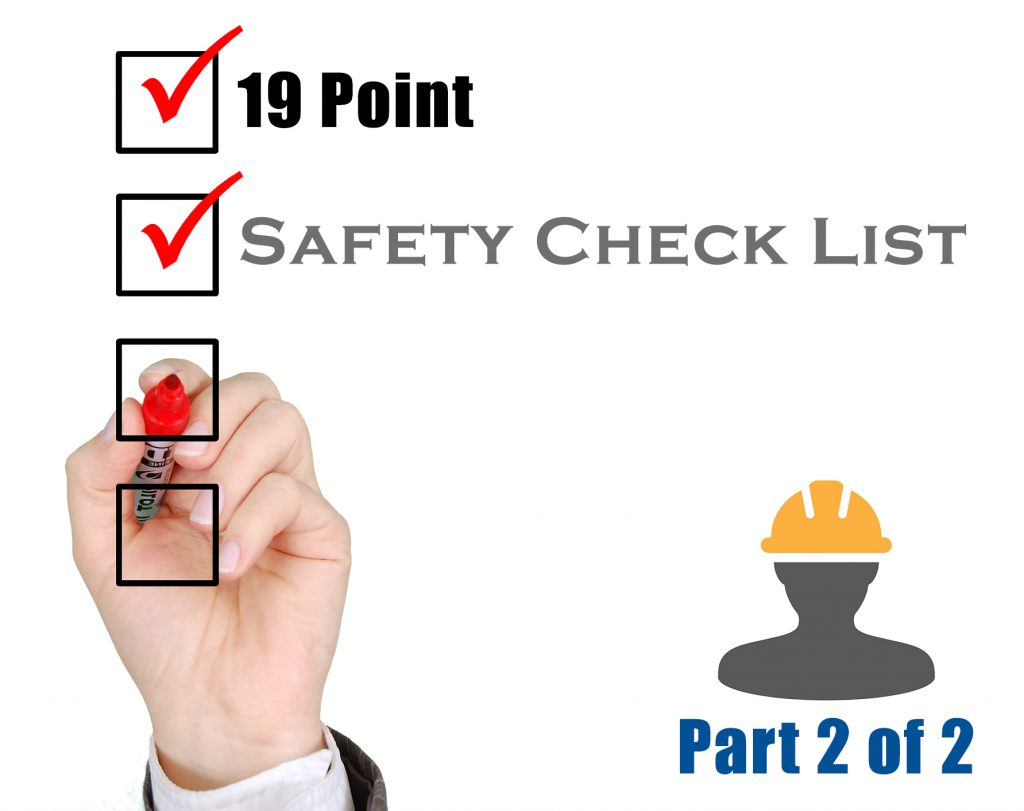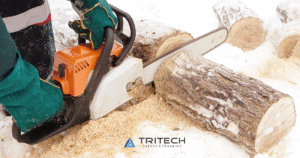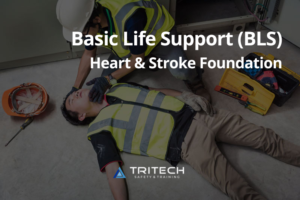For the first 10 Safety Points, read last week’s article Here.
11. Hazardous Materials
Material Safety Data Sheets should be provided for all hazardous materials. Containers should be clearly labeled and properly stored.
When using hazardous materials, employees should have and use the appropriate Personal Protective Equipment including gloves, hard hats, hearing and eye protection, safety harnesses, protective clothing, respirators, and CSA approved footwear. After use, hazardous materials should be disposed of properly.
12. Emergency Response Plan
According to OHS Section 4.13, an Emergency Response Plan must be written, and affected workers must be consulted in the development of the plan.
The plan should include:
– Identification of potential emergencies
– Procedures for dealing with emergencies
– Identification of, location of, and operational procedures for emergency equipment
– Emergency response training
– Location and use of emergency facilities
– Fire protection requirements
– Alarm and emergency communication requirements
– First aid services
– Procedures for rescue and evacuation
– Designated rescue and evacuation workers
13. Sanitation
Washrooms and food preparation areas should be kept clean with measures in place to prevent the spread of disease. All occupational environment requirements are outlined in OHS Regulations 4.84 – 4.87.
The following services must also be provided adequately depending on your business:
– Toilets
– Showers
– Potable water
– Clothing storage
– Change rooms
– Field accommodations
– Lunchrooms
14. Ventilation
According to Sections 5.61 to 5.71, a local exhaust ventilation system must be designed so that under normal work procedures a worker’s breathing zone is not located between the source of contamination and the exhaust uptake.
Make sure that the ventilation system is not obstructed by material or equipment placed in front of the ventilation openings.
If an operation or work process produces a combustible or flammable air contaminant in concentrations that may present a risk of fire or explosion, the employer must provide a separate exhaust ventilation system for the operation or work process.
15. Fall Prevention
Section 11 covers fall protection and states that all elevated surfaces must be strong enough to carry the weight of all workers on it.
These areas must also be covered on the sides with appropriate railings or features to minimize the risk of falls. When risk is involved, workers must be provided with anchors or fall restraint systems.
When a fall restraint system is used to block a fall, it must be tested before it is used again.
16. Personal Protective Equipment
Depending on your hazards assessment, you must provide all workers with Personal Protective Equipment including headgear, hearing protection, gloves, respiratory masks, eye protection, jackets, or aprons.
In environments where workers are exposed to cold, water-resistant and appropriately insulated clothing must be worn. If workers are exposed to deep water, life jackets must be equipped. For a list of complete PPE see Section 8 of the OHS regulations.
17. Confined Spaces
If your workplace has confined spaces, which may be hazardous due to lack of oxygen, the presence of toxic gas, or harm due to entrapment, adequate protection and training must be supplied based on part 9 of the OHS regulations.
This means that you must study all possible risks associated with a confined space and advise workers of the same. Confined spaces should also be securely locked and labeled when not in use.
18. Ergonomic Safety
OHS Regulations 4.46 – 4.53 require training and means for employees to maintain ergonomic safety.
You should review your business for:
– Jobs that require eyestrain or glare
– Tasks that require prolonged raising of arms
– Tasks that put the neck and shoulders in awkward positions
– Work that requires twisting or bending over
– Hand tools with soft grips, non-slip surfaces, comfortably curved shapes, and appropriate lengths
– Power tool assistance utilized where possible to reduce employee strain
19. Safe Work Practices
Machine guards should be in use and workers should know how to use machinery and the required personal protective equipment. All new employees should receive adequate training in safe work procedures including orientation specific to their workplace.
Workers should also know procedures when working alone and where to go and who to call for first aid assistance.
Click here to download the OS&H Toolkit for Small Businesses. It includes sample Safety Inspection Checklists.
To come up with a checklist specific to your business needs, contact us about our Training Services.
TriTech Safety & Training Inc, located in Grande Prairie is in the best position to keep you up to date with OHS Regulations and Safety Standards. Let us help you to prevent Avoidable Fines & Penalties. For more information go to https://tritechsafety.ca/courses/





